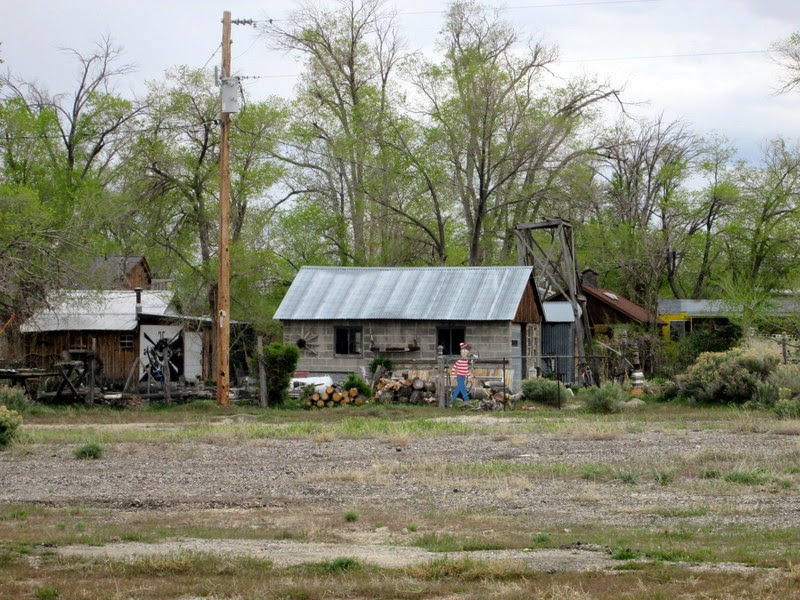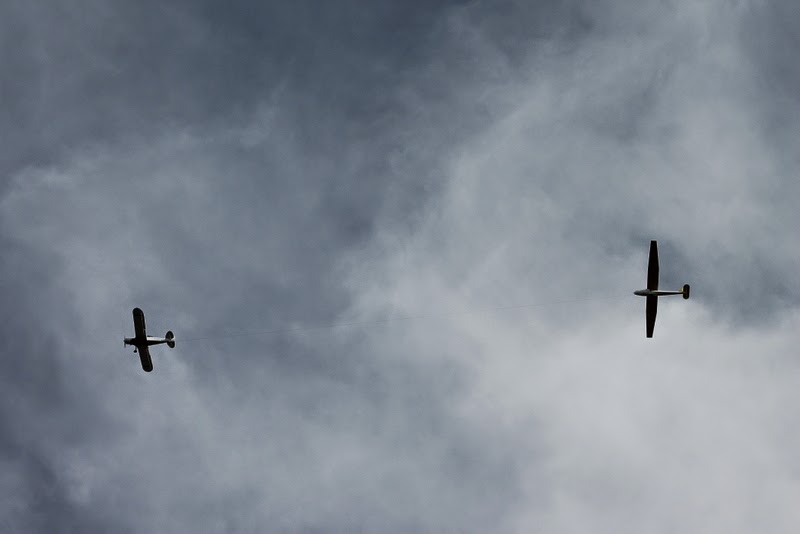After several months of extended stays in Mesa, Lake Havasu, Yuma and Desert Hot Springs we have hit the road for the spring and summer travel season. Since we've headed north I guess we can say we are officially on our way to Alaska. We plan to take about a month getting to the border somewhere in Montana. Our first stop was in Tehachapi, CA and then on to Las Vegas where we have an appointment for annual maintenance on Opus. Our plan (always written in the sand) is to travel some two lane roads through Nevada, Idaho and Montana to add some national parks to our list. All this will depend on the weather as we wait for it to warm up.
One big issue with traveling in the West this time of year is the wind. We sure were happy that the windmills in the Coachella Valley were not spinning the day we hit the road.
Our first stop was the Mountain Valley RV park in Tehachapi that our friend Marty had recommended. The park is right on the runway of a small airport that is primarily used for sailplanes. It was actually very quiet as there were only a few take-offs and landings a day. This old crop duster was used to pull the glider into the air.
This must have been a lesson because they were not going very high before the glider released the cable and landed. They then hooked up again and were pulled into the air. When I took a few flight lessons years ago we called these touch and goes. The difference here was the glider would touch and then have to hook up to the plane to go.
One flight was so short that the plane and glider landed at the same time. As you can see, wind energy is a big deal in a lot of places out here.
The reason for the celebration? There was actually green grass growing here. We were out of the desert at least for a couple of days.
Having grown up by the tracks I have always been a bit of a railroad buff. As kids, my friends and I played on all the old rail cars parked in the local rail yard. The first gift I remember was a Lionel train when I was six. Only later did I realize that the train was as much a toy for my dad as for me. We came to Tehachapi, an old railroad town, to see the Tehachapi Loop. The town celebrates its railroad heritage with a park displaying old signal poles and a museum (that was closed).
They even have an old water tank from the days when the steam engines needed to fill the tanks with water to produce the steam for locomotion.

The loop was needed to reduce the grade over the mountains between Bakersfield and Mojave for the Union Pacific. It is now the mainline for the Burlington Northern Santa Fe, BNSF, railroad. It was constructed in the 1870's by 3000 Chinese workers who also blasted several tunnels to get the tracks over and through the mountains. Even though there are up to as many as 40 trains a day using the loop, we took our lunch with plans to stay as long as needed in order to see a train come through. We were told that sometimes you have to wait quite a while to see a train. We were rewarded with not one, but three trains within two hours. We lucked out because the trains were held up earlier for track maintenance. We talked to another couple who told us they had come earlier that morning and waited a long while and no trains came through. Here an eastbound (up hill) train enters the loop through tunnel number nine. You can click on the pictures to enlarge them.

Here the three engines pulling this 107 car train are in the .73 mile loop and the two engines that are pushing can be seen on the right. So you can see the first and last engines of a train that is nearly a mile long.
Here the three engines are passing over the cars that are 77 feet below coming out of the tunnel. The loop allows the grade to remain a steady 2%.
Nanc was trying to get the engineer to blow his horn.
After leaving the loop the train continues to snake its way up the mountain. Even these kinds of weaving turns are unusual for railroads. The first engine is about to go around the turn and out of sight.......
......while the pushers have still not passed over the tunnel in the loop. I did not time it, but I'm sure it took more than half an hour for this long train to climb through the loop.
Not long after the up hill train passed we heard a whistle and a downhill train came around the corner. This was another very long train, but all the cars appeared to be empty.
After watching this train through the loop we heard another one coming downhill so we moved to the tunnel where it would exit the loop. This train was not very long so we did not get to see any cars above the tunnel as the engine exited.
We moved a bit farther down the track in time to see the second downhill train passing the empty first one that was parked on a siding. These sidings were used for trains in each direction to pass and in the old days to add water to the locomotives.
Here is an aerial view of the loop I found. We were standing on the right about half way up to view the whole loop. Even if you are not a railroad buff the Tehachapi loop is a worthwhile stop.
Here is a link to a site with information about the best places to view the trains. It really was very cool!






















































